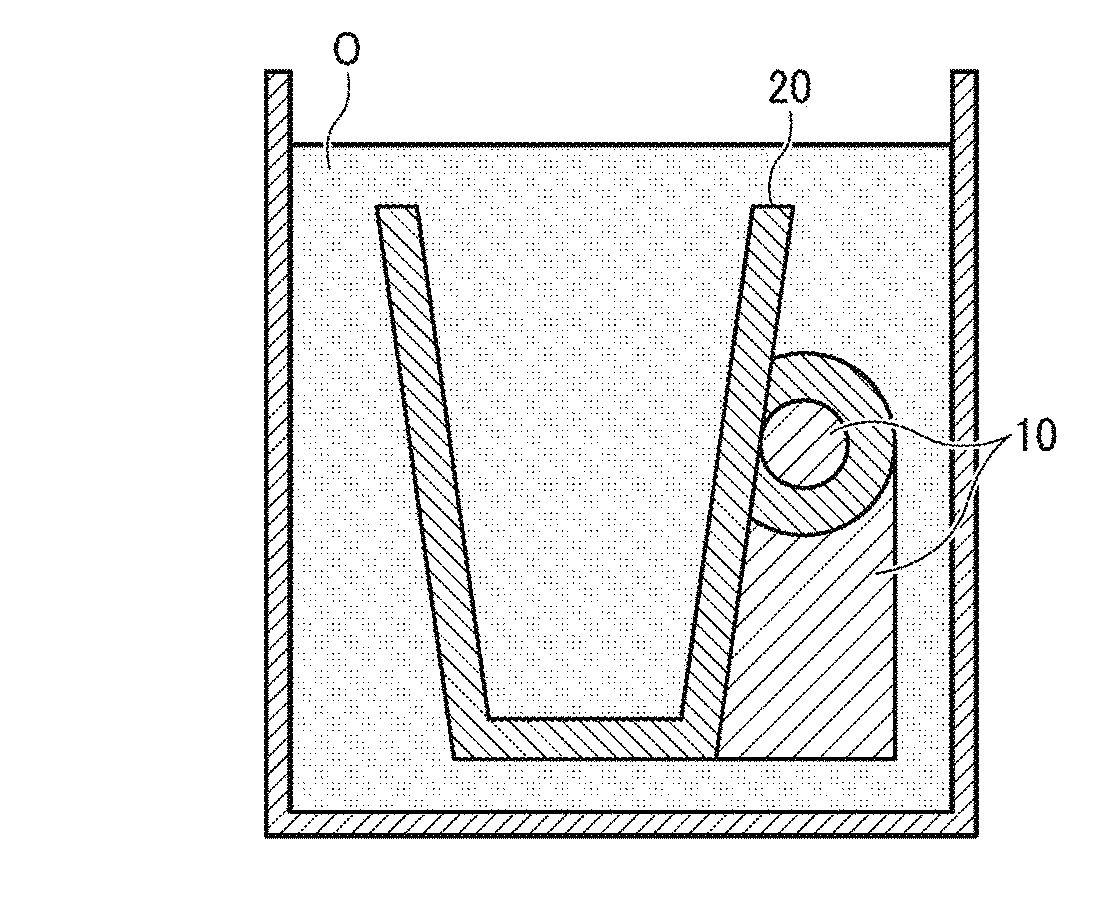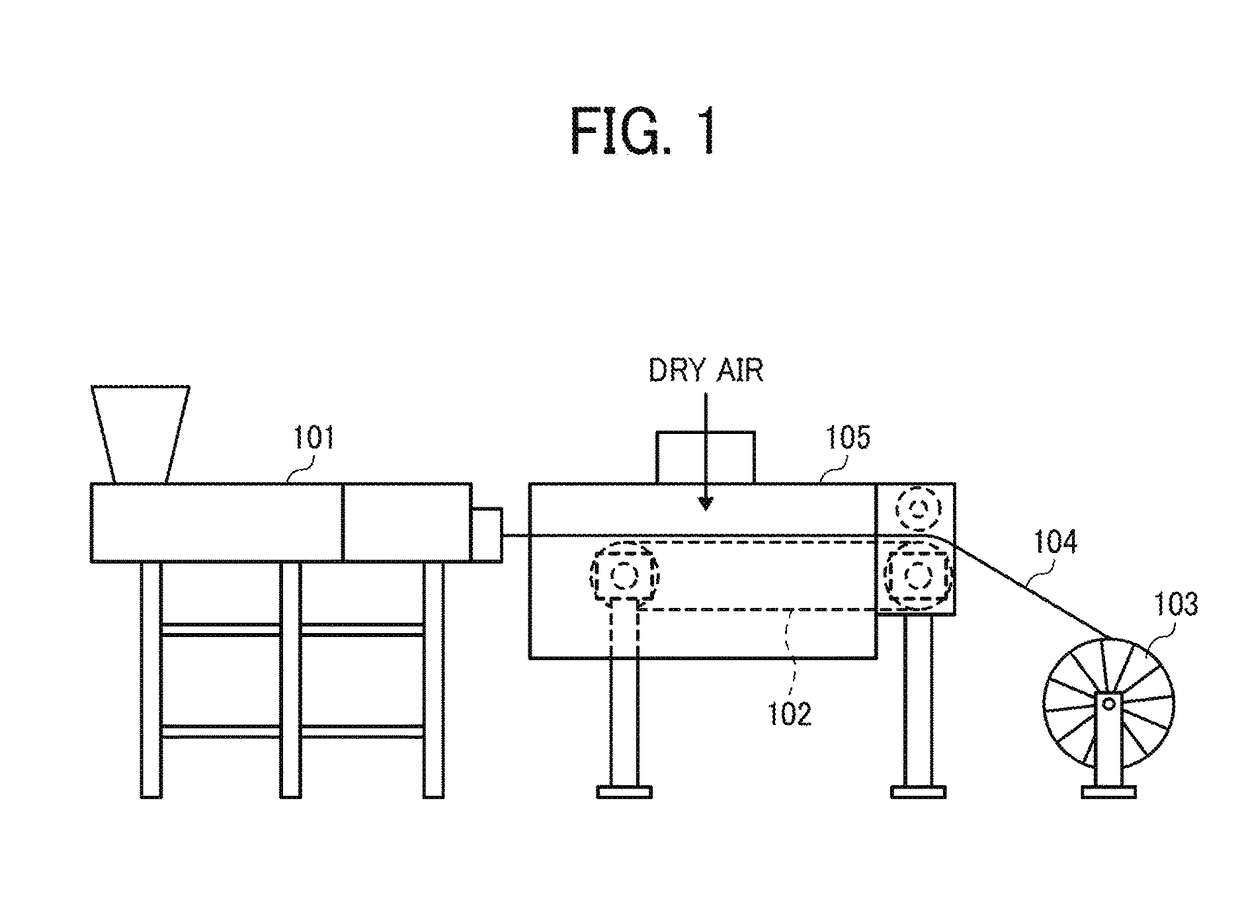Resin composition for solid freeform fabrication and method of manufacturing solid freeform fabrication object
Inactive Publication Date: 2018-01-04
RICOH KK
View PDF1 Cites 13 Cited by
- Summary
- Abstract
- Description
- Claims
- Application Information
AI Technical Summary
Benefits of technology
This patent is about a better type of material that can be used for 3D printing. It has certain qualities that make it better than other materials. The material has a high melting point and can be dissolved in a solvent quickly. This allows for easier handling and printing with the material.
Problems solved by technology
However, since the super engineering plastic is discharged at high temperatures from a heating head, the resin greatly warps due to the temperature difference between the resin and the external environment.
Currently, no supporting material that can bear such high temperatures is found.
However, the supporting material using PVA has poor heat resistance.
In addition, material such as copolymer resins of methacylic acid and methyl methacrylate dissolved in alkali solution has a softening point of around 100 degrees C., starts decomposing at 200 degrees C. or higher, and demonstrates no flowability at around 240 degrees C. The alkali solution to be used is required to have a pH of 11 or higher, which causes a problem about safety.
Moreover, methacrylic acid is hard and brittle and excessively lacks flexibility.
Therefore, unless it contains a massive amount of plasticizer, the material of methacrylic acid may break by folding during conveyance of fabrication or cause trouble during conveyance in tubes having a high curvature.
However, if a massive amount of plasticizer is used, dischargeability of resin solution such as bleaching tends to deteriorate in particular in high temperature and high moisture environment.
Furthermore, if a supporting material to be physically removed is used, since the this supporting material is the same as the modeling material, the interface between the modeling material and the supporting material is not clear so that probability of breaking the modeling material is high.
In addition, physical removal of the supporting material generally requires a great force with tools such as pliers.
Accordingly, it takes a long time and degrades working efficiency.
To make matters worse, removal of the supporting material is difficult at small gaps, etc.
Method used
the structure of the environmentally friendly knitted fabric provided by the present invention; figure 2 Flow chart of the yarn wrapping machine for environmentally friendly knitted fabrics and storage devices; image 3 Is the parameter map of the yarn covering machine
View moreImage
Smart Image Click on the blue labels to locate them in the text.
Smart ImageViewing Examples
Examples
Experimental program
Comparison scheme
Effect test
examples
[0066]Next, the present disclosure is described in detail with reference to Examples and Comparative Examples but not limited thereto. “Percent” in Examples means “percent by mass”.
[0067]Manufacturing of Resin Composition for Solid Freeform Fabrication
examples 1 to 11
[0068]The materials used in Examples 1 to 5 are the following.
example 1
te (U100, Manufactured by UNITIKA LTD.) Pellet
[0069]Example 2: polyarylate-based resin (M2040, manufactured by UNITIKA LTD.) pellet
the structure of the environmentally friendly knitted fabric provided by the present invention; figure 2 Flow chart of the yarn wrapping machine for environmentally friendly knitted fabrics and storage devices; image 3 Is the parameter map of the yarn covering machine
Login to view more PUM
| Property | Measurement | Unit |
|---|---|---|
| Weight | aaaaa | aaaaa |
| Time | aaaaa | aaaaa |
| Time | aaaaa | aaaaa |
Login to view more
Abstract
A resin composition for solid freeform fabrication includes a thermoplastic resin, wherein the resin composition satisfies the following conditions 1 and 2. 1. The resin composition has a glass transition temperature (Tg) of 100 degrees C. or higher. 2. A molded object of the resin composition is dissolved in tetrahydrofuran at 25 degrees C. within 24 hours at a mass ratio (the molded object / tetrahydrofuran) of the molded object to tetrahydrofuran is 1 / 10 when the molded object is heated at 220 degrees C. for two hours.
Description
CROSS-REFERENCE TO RELATED APPLICATIONS[0001]This patent application is based on and claims priority pursuant to 35 U.S.C. §119 to Japanese Patent Application No. 2016-132640, filed on Jul. 4, 2016, in the Japan Patent Office, the entire disclosure of which is hereby incorporated by reference herein.BACKGROUNDTechnical Field[0002]The present disclosure relates to a resin composition for solid freeform fabrication and a method of manufacturing a solid freeform fabrication object.Description of the Related Art[0003]3D modeling (additive manufacturing, etc.) technologies are appealing and widely used as modeling methods and materials diversify.[0004]As the 3D modeling method, for example, fused deposition modeling (FDM) is known.[0005]Powder bed fusion (PBF) is another method of 3D modeling. PBF includes selective laser sintering (SLS) to form an object by selective irradiation of laser beams and selective mask sintering (SMS) in which laser beams are applied in a planar manner using a...
Claims
the structure of the environmentally friendly knitted fabric provided by the present invention; figure 2 Flow chart of the yarn wrapping machine for environmentally friendly knitted fabrics and storage devices; image 3 Is the parameter map of the yarn covering machine
Login to view more Application Information
Patent Timeline
 Login to view more
Login to view more IPC IPC(8): B29C39/36C08K5/12C08G63/00B29C39/02C08G65/48C08G65/40C08K3/22C08K5/092
CPCB29C39/36C08G63/00C08G65/4012C08G65/485C08K2003/2237C08K5/092C08K5/12B29C39/02C08K3/22B29K2105/0038B29K2071/00C08G2650/40B29C64/314B29C64/118B29C48/05B29C48/355B29C48/911C08K3/36C08K3/346C08K2003/2241B33Y70/10C08L71/00
Inventor SAITO, AKIRANORIKANE, YOSHIHIRO
Owner RICOH KK
Who we serve
- R&D Engineer
- R&D Manager
- IP Professional
Why Eureka
- Industry Leading Data Capabilities
- Powerful AI technology
- Patent DNA Extraction
Social media
Try Eureka
Browse by: Latest US Patents, China's latest patents, Technical Efficacy Thesaurus, Application Domain, Technology Topic.
© 2024 PatSnap. All rights reserved.Legal|Privacy policy|Modern Slavery Act Transparency Statement|Sitemap



